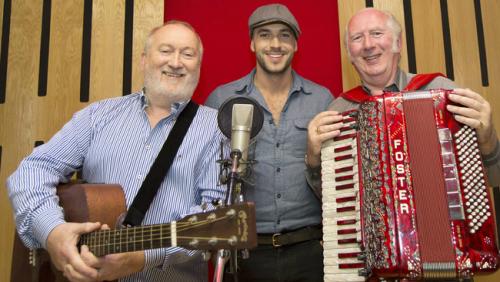The Origin And Background Of Irish Music

Irish music is one of the most influential forms of music in the world, with its roots being traceable back in the medieval era. Its prolific nature has captured the attention of millions of listeners across the globe. The essence of Irish music has remained unaltered and versatile even in the 21st century, keeping many of its traditional aspects intact despite having thriving connections with music in Britain and United States of America. On the contrary, it has profoundly influenced some popular genres of music, such as country, rock and roll, punk and rock. Quite a good number of Irish fusion artists from these genres have even achieved mainstream success, in and outside Ireland.
Although Irish music has earned worldwide fame and recognition only during the last two decades, its birth was initiated with the arrival of Celts in Ireland almost two thousand years ago. The Celts brought along with them music that was influenced by the East, and it is a common belief of the Irish people that the invention of the Irish harp originally took place in ancient Egypt. Between the 10th and 17th centuries, professional harpists were employed by the ruling Chieftains (not to confuse with Irish folk musical group The Chieftains) to perform and compose music for them. But after the Chieftains fled to mainland Europe under pressure from the invaders in 1607, all the harpists lost their titles and became “travelling” musicians.
The first written works of Irish music was published in 1762 by the Neale brothers in Dublin. Edward Bunting created the most important manuscripts of Irish music, which were disclosed at the Belfast Harp Festival in 1792. During the Great famines of the 1840s, more than two million people from Ireland migrated to different parts of the world, primarily USA and Australia. As a result, traditional Irish music spreaded gloablly, specially in the USA, where music networks were quickly established in New York, Chicago and Boston. 78-RPM recordings of Irish musicians were produced in the 1920 in USA, which made their way to Ireland and influenced the musical styles of musicians there. They even started playing their instruments accompanied with the piano.
The most popular instruments in traditional Irish music are the Irish accordions, fiddle, Irish flute, tin whistle, celtic harp, uilleann pipes and bodhran. Irish Accordions usually come in various configurations and types. Some use a chromatic or diatonic buttonboard, others use a piano-styled musical keyboard. A fiddle looks exactly like a violin, but it is strung with steel instead of gut or nylon. Irish flutes have been designed in various ways over the centuries, with the most preffered being the wooden ones, with six consecutive finger holes. Tin whistles are metal cylinders, sometimes tapered , with a mouthpiece and six holes known as 'stops'. Uilleann pipe is an instrument that features an inflated bag to which several reeded pipes are attached. Bodhrans are constructed using a sheet of goatskin stretched over a circular wooden frame.
Although Irish music has earned worldwide fame and recognition only during the last two decades, its birth was initiated with the arrival of Celts in Ireland almost two thousand years ago. The Celts brought along with them music that was influenced by the East, and it is a common belief of the Irish people that the invention of the Irish harp originally took place in ancient Egypt. Between the 10th and 17th centuries, professional harpists were employed by the ruling Chieftains (not to confuse with Irish folk musical group The Chieftains) to perform and compose music for them. But after the Chieftains fled to mainland Europe under pressure from the invaders in 1607, all the harpists lost their titles and became “travelling” musicians.
The first written works of Irish music was published in 1762 by the Neale brothers in Dublin. Edward Bunting created the most important manuscripts of Irish music, which were disclosed at the Belfast Harp Festival in 1792. During the Great famines of the 1840s, more than two million people from Ireland migrated to different parts of the world, primarily USA and Australia. As a result, traditional Irish music spreaded gloablly, specially in the USA, where music networks were quickly established in New York, Chicago and Boston. 78-RPM recordings of Irish musicians were produced in the 1920 in USA, which made their way to Ireland and influenced the musical styles of musicians there. They even started playing their instruments accompanied with the piano.
The most popular instruments in traditional Irish music are the Irish accordions, fiddle, Irish flute, tin whistle, celtic harp, uilleann pipes and bodhran. Irish Accordions usually come in various configurations and types. Some use a chromatic or diatonic buttonboard, others use a piano-styled musical keyboard. A fiddle looks exactly like a violin, but it is strung with steel instead of gut or nylon. Irish flutes have been designed in various ways over the centuries, with the most preffered being the wooden ones, with six consecutive finger holes. Tin whistles are metal cylinders, sometimes tapered , with a mouthpiece and six holes known as 'stops'. Uilleann pipe is an instrument that features an inflated bag to which several reeded pipes are attached. Bodhrans are constructed using a sheet of goatskin stretched over a circular wooden frame.
Advertise on APSense
This advertising space is available.
Post Your Ad Here
Post Your Ad Here

Comments